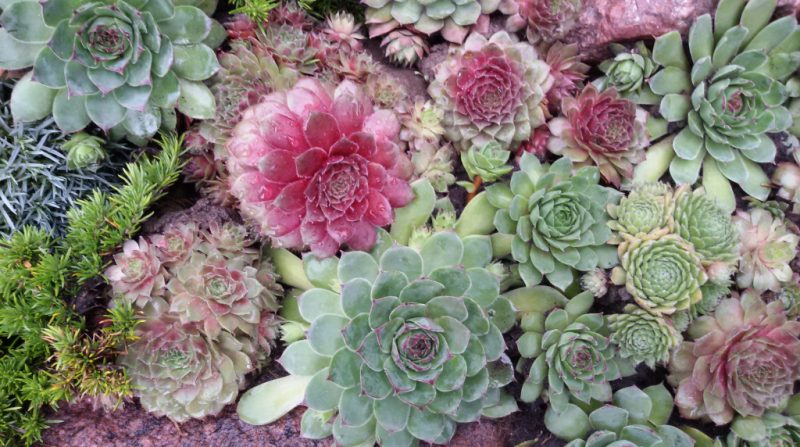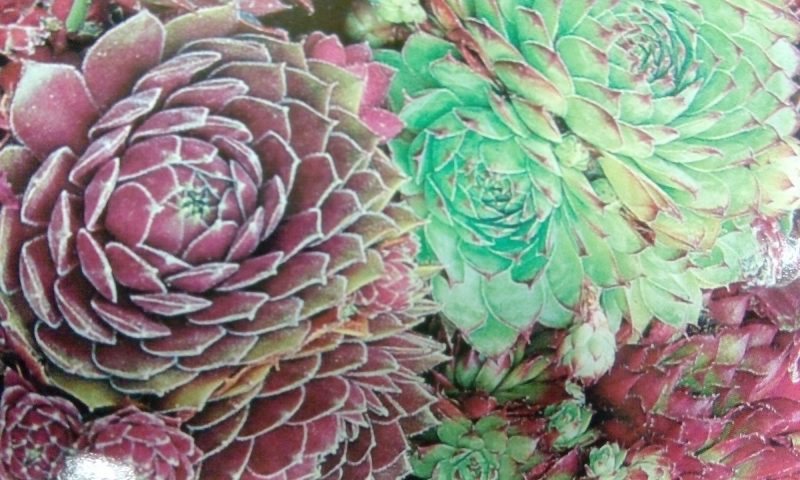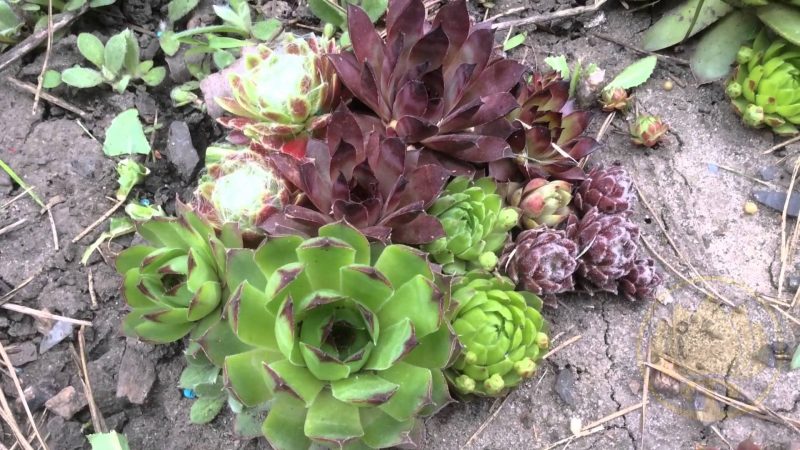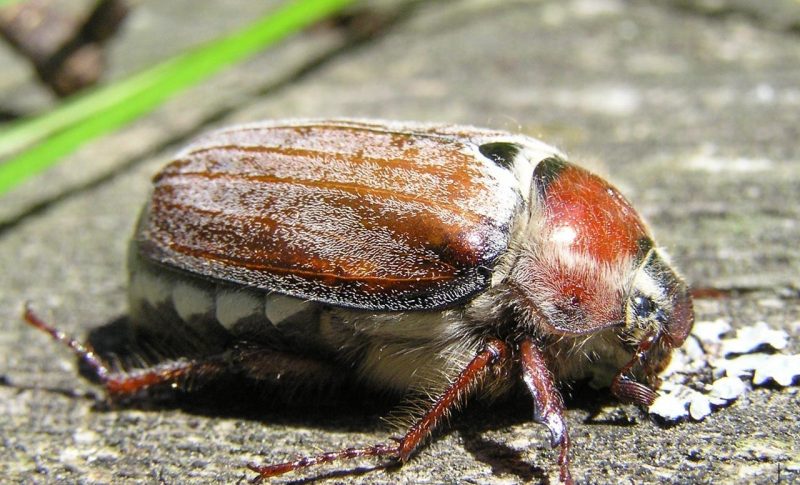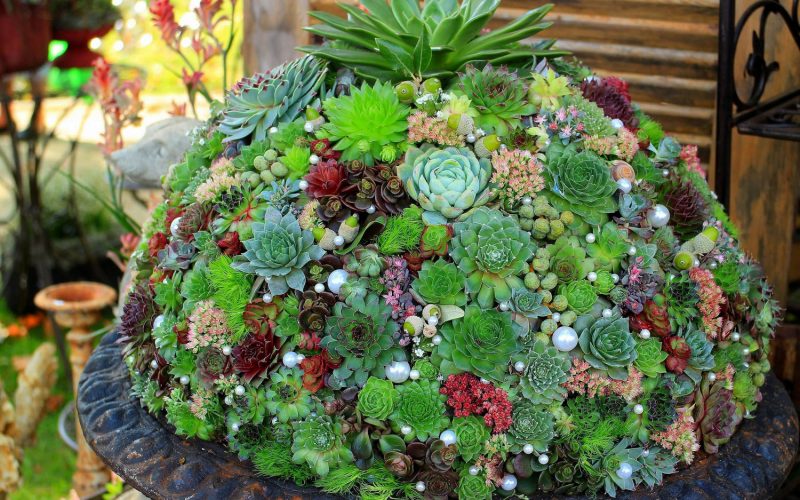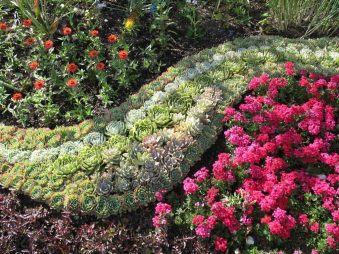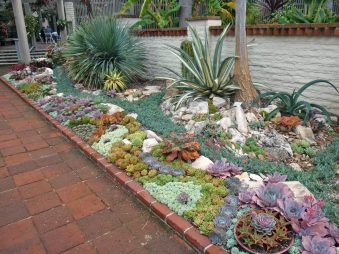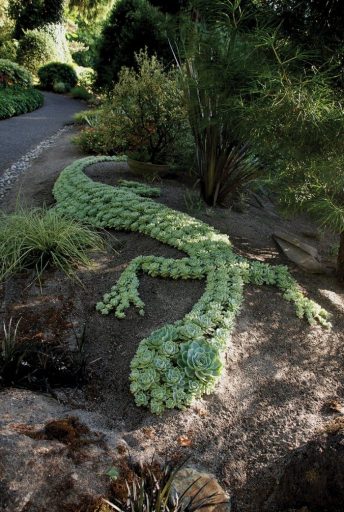The name “stone rose” hides a beautiful succulent, which combines many species. It has several other names, the “main” and official among which is “echeveria”. In the people, this beauty is called "young", "tenacity", "hare cabbage." This is a very unpretentious plant that will help to decorate both the garden plot and the window sill.
Material Content:
Popular varieties of Echeveria
Today, a huge number of different types of survivors are known, more than 160.
Among the most popular plant varieties are the following:
- Chihuahuenzis. It has leaves with a bluish tint and bright pink edges. This is an unpretentious type of plant that easily tolerates direct sunlight.
- Shaviana. A very unusual kind of stone rose. Outwardly resembles a cabbage. It has flat leaves of gray-blue color with wavy pinkish edges. It blooms in summer, in the middle or end of the season.
- The Pearl of Nuremberg. A beautiful view of a stone rose with brown-gray, very pale leaves. It blooms usually in August.
- Purpusorum. Very slowly growing plant. Its average height is 8 cm. It has hard triangular leaves with olive, green-gray or green-white color. The leaves of such a stone rose are covered with reddish spots. It blooms at the end of the spring season.
- Pulidonis. Another very slowly growing succulent. Outwardly similar to the previous view. But it has thicker leaves of a pale bluish-green color with red edges and without bright inclusions. It blooms in spring.
- Bristly echeveria. This is a bushy species of the plant under discussion. Its main feature is the presence of white long hairs on the leaves. How such a plant blooms, it will be possible to admire the summer.
Among other interesting species, one can distinguish a rainbow stone rose with a corresponding color, the Lauhe echeveria, the leaves of which are covered with a plentiful waxy coating, making it almost white, Lilacin with hard, not too thick soft lilac leaves, which begins to bloom from the end of winter. The classic form of such a plant should be called Desmet. This is a fast-growing flower with silver-blue leaves, blooming at the very beginning of summer.
How to plant a rose in the garden
"Hare cabbage" is unpretentious and can grow well in open ground all year. She is not afraid of drought, heat, direct sunlight and even frost.
In addition, the plant perfectly decorates the summer cottage, and even a beginner gardener can cope with the planting and care of a stone rose.
If you plan to grow a flower from seeds, they must be sown in plastic containers at the end of the winter season. Germination should be carried out in a warm room, where the air temperature is at least 20 degrees. Landing on the site is made only in the middle of summer. Over a long period before it, seedlings are strong enough to withstand adverse external factors on the street.
You can simplify your task and buy seedlings already sprouted by professionals. It is important to purchase them in trusted nurseries so as not to be deceived by unscrupulous sellers. Seedlings in garden centers are usually already adapted to the climate of a particular region, so there should be no problems with their wintering.
So that in the autumn period the culture does not feel discomfort under a layer of fallen leaves, where it is too damp for it, it should be planted in an open area accessible to direct sunlight.
Near the echeveria can live any "neighbors". But it is better to avoid violently growing, which are able to close its sockets from light and generally inhibit the development of the plant.
The best time for planting a young stone rose is June and July. First you need to carefully weed the place chosen for the "beginner", removing even the smallest weeds, and add a small amount of expanded clay to the soil. This is especially true if the clay soil in the area - such a material will contribute to the outflow of excess moisture.
Next you need:
- Carefully pull the flower out of the pot along with a lump of earth.
- Press it a little into the ground and crush it with soil.
- Check that between the seedlings there is a distance of at least 12 - 15 cm.
- Water the planted plant.
If the gardener didn’t have time to plant a crop over the summer, then it’s okay. You can "settle" it on your site before the end of September. Of course, if the beginning of autumn was not abnormally cold, with frost.
Plant nutrition and fertilizer
It is interesting that the stone rose flower grows well and develops even without any fertilizer. But for active flowering, dressing is still needed. Breeding fertilizer according to the instructions on the package, you need to reduce the concentration of the solution exactly two times.
It is recommended to fertilize the plant only after it reaches 3 years of age. Great for this purpose is a special top dressing for cacti.
If the leaves brighten, lose their attractiveness, and the rosette stretches out and / or decays, this indicates too frequent use of fertilizers. Feeding should be combined with watering. First you need to water the soil with clean water, then - fertilizer. If you do not take care of such preparation, you can burn the delicate roots of the plant.
Conditions for the normal development and growth of Echeveria
Stone rose grows well on any soil. Sandy and rocky soils are great for her, because the roots of the plant do not like a lot of moisture. If the garden has fertile “wet” soil, then you will need to take care of a pillow made of gravel or small pebbles.
Successfully growing and blooming young in the bright sun and partial shade. But its color and size depend on the quality of lighting. So, in the sun, the leaves of the plant turn out to be especially bright, but small in size.In the shade, on the contrary, large, but dim.
The flower is not picky about the air temperature. True, when it drops below zero, you need to take care of the shelter of the plant.
Read also:how to care for a cactus
Stone Rose Propagation Methods
Young growth is able to reproduce perfectly independently, without human intervention. This happens in a vegetative way. Many arrows with daughter rosettes depart from the mother plant. Separate them and transplant is best in spring.
First, miniature sockets require growing on a bed or in a plastic container and only after that they can be moved to a permanent place.
Different types of stone roses are able to self-pollinate. As a result, completely new, unusual hybrids often appear.
As noted above, rabbit cabbage can also be grown from seeds. To do this, they are sown in soil at the end of winter by about 1 cm, where they are kept warm under good light until summer. Usually the seeds do not sprout just because of serious mistakes by gardeners. For example, with too much watering.
Another way of plant propagation (more rare) is with a petal.
- To do this, you need to separate the leaf from an adult outlet. The slice is made with a very sharp knife treated with a disinfectant.
- After drying the leaf in the open air for about a quarter of an hour, it sits in a minimally moistened sand mixture.
- On top of the container with planting material is covered with cling film or bag. In such a home-made miniature greenhouse, a young outlet quickly grows.
Plant diseases and pests
Most often, "tenacity" is affected by various types of rot.
If the first signs of the disease appear, the plant needs to be transplanted to another place on the site, away from neighbors. Then you need to cut off the damaged part and generously sprinkle the “wound” with crushed coal. If the roots turned out to be affected by the disease, it is better to immediately destroy such a flower and disinfect the place where it grew, otherwise the problem will spread further to other cultures.
Of the garden pests, the May beetles plants often eat the flesh. They eat long, wide passages in its leaves. Having noticed such “tunnels”, the affected stone roses will have to be burned, and the rest transplanted to a completely new place. The soil under a diseased plant should be treated with a means to destroy the remaining larvae.
Technology of sheltering roses for the winter
Youngsters can easily survive the winter, even in the open ground. You just need to make sure that moisture does not get into the very center of the plant's outlet. To do this, he will need to be covered.
It is convenient to protect flowers from rain and snow with cropped plastic bottles, spruce branches and polyethylene. Be sure to strengthen the coating so that it is not blown away by the wind.
Young outlets that were planted only a couple of months ago need shelter not only for protection from moisture. It can be difficult for them to tolerate low temperatures. If possible, it is better to send a stone rose in home pots or containers for the winter, and return it to the garden again in the spring. It must be remembered that some types of echeveria (for example, cobwebbed) are not able to survive the winter in the garden, even under shelter.
Use in landscape design
The stone rose becomes an excellent unpretentious decoration for any suburban area. It can be planted in flower beds to other low, bright flowers, placed along curbs or garden paths, sent to flower beds, where there are only echeveries of different types.
Youngsters allow you to create amazing garden compositions with your own hands. For example, you can partially dig an old cracked jug into the ground, and plant rosettes near its neck. They will simulate water flowing from the tank.
Planting a stone rose in the garden will turn into an old boot or a car tire filled with earth, as well as other similar interesting objects.Such a composition will delight all guests of the summer cottage and, of course, its owner for many years.
Stone roses of different types are becoming more and more popular every year among gardeners. This is easily explained by their unpretentiousness, spectacular appearance and budget cost.


